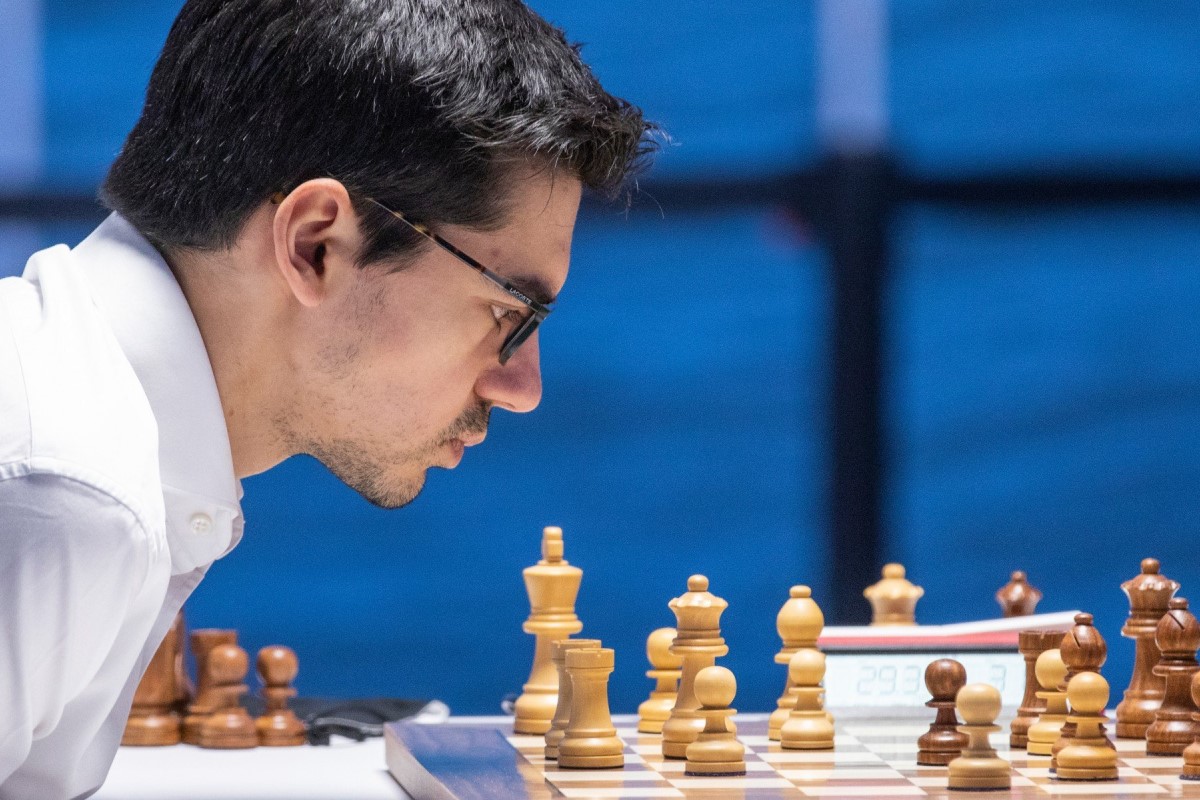


No one could have predicted before the tournament that the top game of round 9 would be the clash between the two youngest players in the field, Alireza Firouzja and Andrey Esipenko. With Firouzja in the sole lead and Esipenko coming from beating Magnus Carlsen in the previous round to join the chasing pack, the encounter that faced a 17-year-old against an 18-year-old was the main event of the day.
Firouzja had the white pieces and played a quiet novelty on move 9. A strategical battle ensued, with both players taking their time to find accurate manoeuvres. The point was split after 41 moves. Nigel Short was following the game, and took the chance to quip on Twitter:
It is a most sobering and depressing thought when a man realises that he is 20 years older than the COMBINED age of the players on top board at #TataSteelChess
— Nigel Short (@nigelshortchess) January 26, 2021
By the time the youngsters had signed the draw, Fabiano Caruana had already defeated Radoslaw Wojtaszek with the black pieces. The world number 2 played the most shocking move of the day, as he exchanged his dark-squared bishop for a white knight out of a King’s Indian Defence — an unthinkable manoeuvre according to classical chess principles, with Emil Sutovsky describing Caruana’s play as “ultimate 21st century chess”.
Later on, Anish Giri would also join the lead by inflicting Maxime Vachier-Lagrave’s third loss in a row with black. Carlsen also won his round-9 game, as he bounced back from his defeat against Esipenko by beating former sole leader Nils Grandelius.
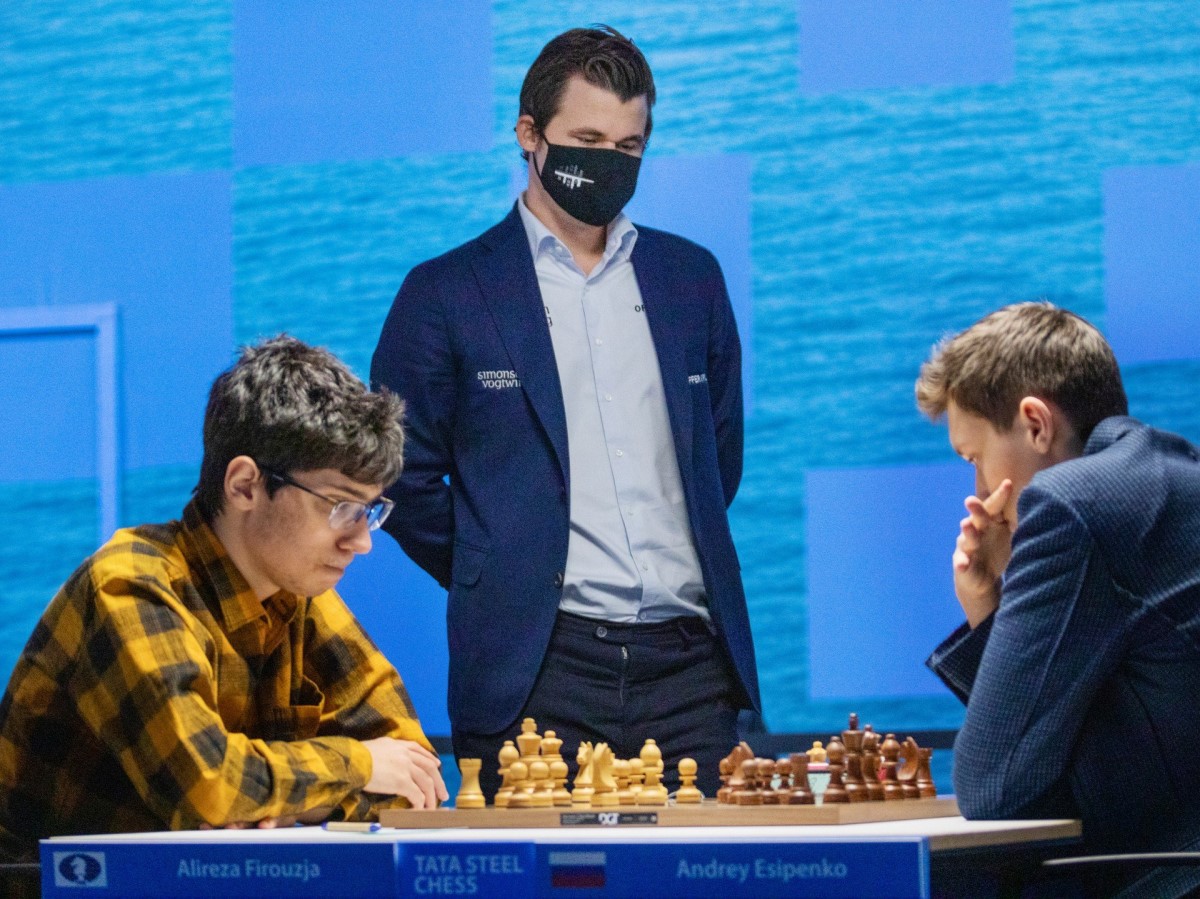
The world champion looking at the two highest-rated junior players in the world fighting on the top board | Photo: Jurriaan Hoefsmit
The defending champion in Wijk aan Zee has been playing excellent chess this year, with his missed win against Jan-Krzysztof Duda in round 3 a near-masterpiece. Against Radoslaw Wojtaszek in round 9, the Italian-American star played the King’s Indian Defence and shocked commentators and spectators alike when he deviated from theory on move 13:
As we start learning new openings, if we decide to play the double-edged King’s Indian, we are usually told that exchanging the dark-squared bishop should only be done in very specific circumstances — one of which is not on move 13 with a lot of pieces still on the board. Caruana, one of the strongest theoreticians in the world, however, decided to go for 13...Bxc3 here. Wojtaszek spent over 3 minutes on the obvious 14.Qxc3, and after 14...Qf6 needed half an hour to wrap his head around the new concept — he continued with 15.Qc1.
Ivan Sokolov twitted:
If this decision is good for Black, I need to learn chess again. Geller is probably turning in his grave...
Caruana had allowed White to get the bishop pair, but knew he would get a strong initiative in return. According to the American, Wojtaszek failed to find the best continuation, and by move 32 he clearly had the upper hand:
White’s 32.g3 was a mistake. There followed 32...hxg3 33.hxg3 dxe4 (33...g4 was the strongest reply) 34.gxf4:
Wojtaszek was already in deep trouble, but 34.gxf4 only helped his opponent — he needed to play 34.fxe4 and Black must find the correct plan to convert his advantage after 34...Nh5. After the text, Caruana had 34...gxf4 35.Qg2 exf3 36.Qxg6 Rxg6:
White is doomed — 37.Kh1 f2 38.Bh3 Nc4 39.Rxc4 Re1+ and Wojtaszek resigned.
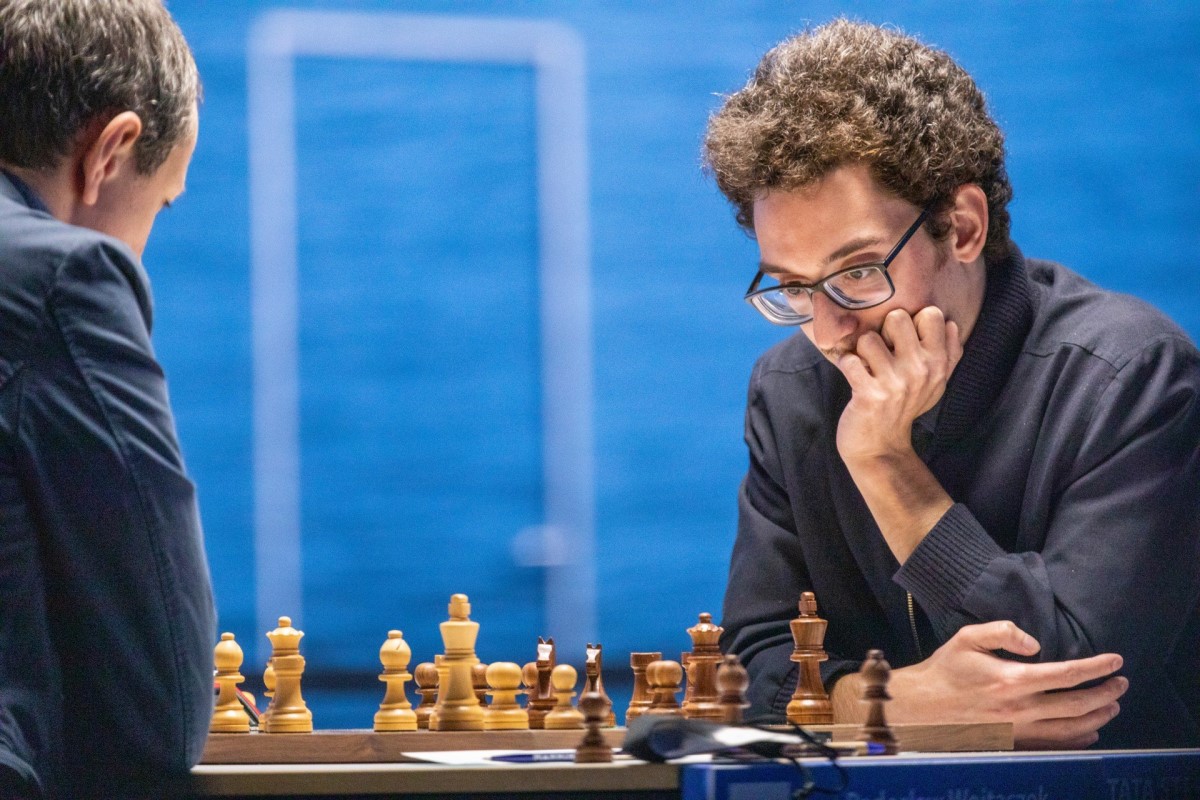
Fabiano Caruana showed what he is capable of in round 9 | Photo: Jurriaan Hoefsmit
French star Maxime Vachier-Lagrave stayed true to his Sicilian Najdorf after losing his last two games with black in Wijk — against Grandelius and Caruana. The world number 5 was defeated again on Tuesday, by Giri, and is now sharing last place in the standings table with a disappointing 3/9 score.
By move 20, Giri already stood better positionally:
Vachier-Lagrave went for a well-known exchange sacrifice in the Sicilian, looking to get an attack on the queenside — 20...Rxc3 21.bxc3:
Trying to complicate matters was perhaps correct for Black, but 21...d5 was a bit much in the diagrammed position (the engines think 21...Rxc3 is the way to go). However, Giri did not find the refutation — 22.Qd2 — and instead played 22.exd5, when Black gets to activate his light-squared bishop with 22...Bf5.
Black continued to look for ways to break through on the queenside, but Giri kept finding the correct defensive resources. Eventually, the Dutchman returned the exchange to enter a superior ending:
Right after the time control, Giri spent 17 minutes to decide on 41.Rxd6, and after 41...Qxd6 42.Qxf7+ Kh8 43.Qf6+ Qxf6 44.gxf6 Rd6 White has the upper hand in the ensuing endgame:
Endgame specialist Karsten Müller took a closer look at how Giri converted his advantage into a crucial victory, noting that this “is a good illustration of Doctor Tarrasch’s famous guideline: White’s rook often belong behind the most dangerous passed pawn”.
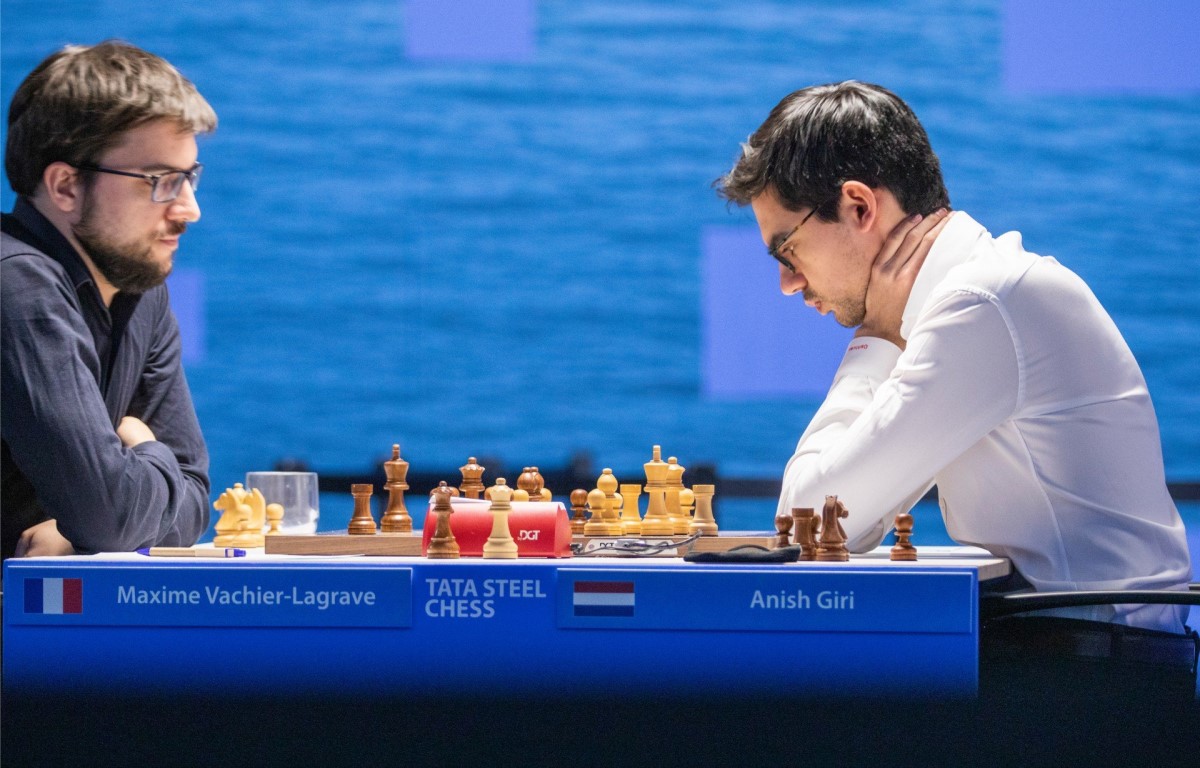
Two Najdorf experts — Maxime Vachier-Lagrave and Anish Giri | Photo: Jurriaan Hoefsmit
It would be naive to write off the world champion in the fight for first place when there are still five rounds to go (before Tuesday’s action) and he is 1½ points behind the leader. In a “must-win situation” — for his standards at least — Carlsen defeated Grandelius from the white side of yet another Najdorf.
In a position with heavy pieces and six pawns per side on the board, Grandelius opted for an imprecise rook manoeuvre on move 26:
The Swedish grandmaster went for 26...Rb8, when the more active 26...Raf8, immediately going for counterplay, was called for. Carlsen eventually gained a pawn, but needed to work hard to convert his material advantage in a queen endgame.
Once again, Karsten Müller analysed the nuances of a very instructive ending.
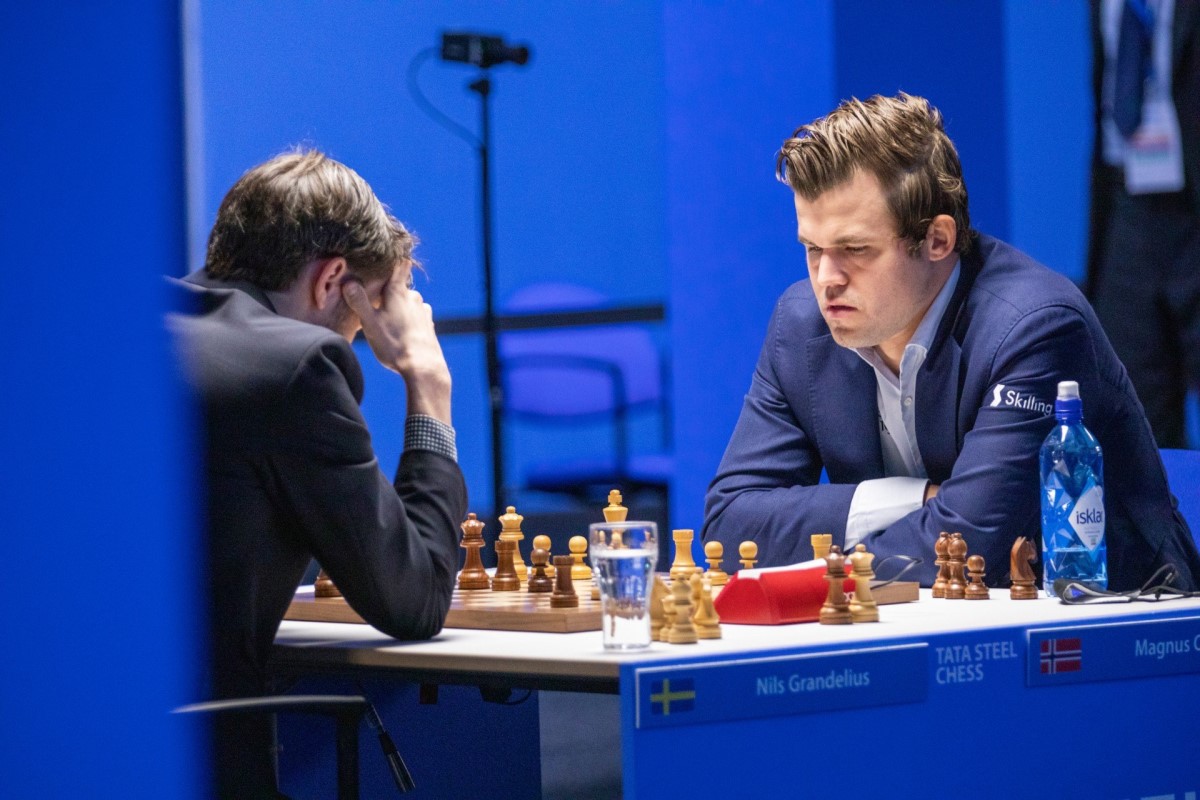
World champion Magnus Carlsen | Photo: Jurriaan Hoefsmit